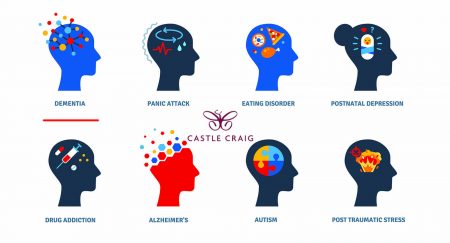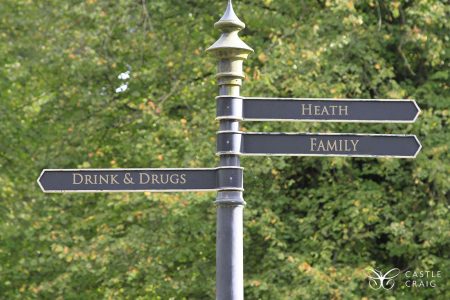Table of Contents
Very few drinks advertised as low alcohol or alcohol-free are entirely without alcohol. They should therefore always be treated with caution. Consuming a lot might put you over the legal limit for say, driving a car and there are important considerations too for people suffering from addiction disorders. At Castle Craig Hospital, this is a subject that frequently occurs in the course of our addiction treatment programme and when planning for continuing care in sobriety after rehab.
The Increasing Popularity of Low and Zero-Alcohol Drinks
Alcohol-free beer and wines are today more popular than they have ever been. Drinking habits have been slowly changing just as work habits and attitudes to health have changed. A UK Survey found that one in four UK adults drank an alcohol-free or low-alcohol product in 2021 and UK adults are far more willing to use alcohol-free and low-alcohol drinks as a way of moderating their drinking than five years ago.
Are They Safe?
A lot of people view alcohol-free drinks as a completely safe and harmless way of relaxing but there are dangers. Certainly, if you are a heavy drinker then drinking alcohol-free beer and wine will give your liver a rest. However, for people with alcohol problems or other addiction problems too, there are dangers associated with this type of drinking that are not always understood.

Download Our Brochure
What Are Alcohol-free Beers and Wines?
Alcohol-free beers are beverages that have either had the alcohol removed or have been brewed to contain less alcohol than the legal limit. They tend to be graded by alcohol content. In the UK, legislation defines such drinks as follows:
- ‘Alcohol-free’ must contain no more than 0.05% alcohol by volume (ABV).
- ‘De-alcoholised drinks’ must be between 0.05% and 0.5% ABV, or less.
- ‘Low-alcohol’ drinks must contain between 0.5% and 1.2% ABV or less.
Makers of these products either remove alcohol in a separate process after fermentation or control the fermentation process itself so that very little alcohol is produced. From this, it is clear that very few beers and wines sold as ‘alcohol-free’ actually have completely zero alcohol content. In itself, this is not especially surprising or alarming – other household foods such as for example vinegar contain tiny amounts of alcohol as well. Some foods can naturally produce very small amounts of alcohol as they are processed – soy sauce is one. Even bread can contain traces of alcohol, but such amounts are too small to be dangerous or even noticed.

Drink Driving and Low-Alcoholic Beers.
It is virtually impossible to get drunk using beverages with such a tiny amount of alcohol although people have tried. From a legal driving standpoint, your blood alcohol content (BAC) must be below 0.08%. In many other countries, the legal BAC is 0.04%. Don’t make the mistake of thinking that a low-alcohol beer with an ABV of say, 0.05% will guarantee that you will be below the legal driving limit, no matter how much you consume.
Low and Zero Alcohol Drinks Can Be Expensive
Compared to standard alcoholic drinks, alcohol-free drinks are often more expensive. This may at first seem surprising but for many producers, the production of low-alcohol drinks is more complicated, often involving an additional process in order to eliminate or reduce the alcohol content. These processes can be complicated and lengthy such as heating the drink so that the alcohol evaporates, or passing the drink through filters that absorb the alcohol. It’s therefore not surprising that extra costs are involved. Large drink producers may sometimes price the low-alcohol versions cheaply, as a ‘gateway’ means of finding more customers but in general, the cheaper version is the full-alcohol one.
Benefits of Alcohol-free Drinks
Apart from the obvious benefit, particularly for heavy drinkers, that the absence of alcohol gives, the second important aspect is that they almost always have fewer calories. For example, a bottle of Carlsberg with 3.8% ABV contains 122 calories whereas a bottle of Carlsberg with 0.0% ABV contains only 73 calories.
Free Confidential Addiction Assessment
Taking the first step towards seeking help can be very difficult, our team is here to help you.
Perceived Other Benefits of Alcohol-free Drinks
Some people find it embarrassing or even shameful to be seen drinking non-alcoholic drinks, especially in pubs or other public places. Such attitudes can be issues needing to be addressed by people in recovery, but a lot of people who are not addicted simply feel that drinking such brands helps them to ‘fit in’ more easily in certain social situations where they don’t want alcohol. Another perception for some can be that the alcohol-free taste is actually better than the real alternative. The taste of most alcohol-free beers is certainly thought by most people to have improved in recent years.
Considerations for People in Recovery from Alcoholism
Non-alcoholic drinks should be treated very carefully by people with an alcohol disorder, especially in early recovery. Addiction never goes away completely, meaning that vigilance is always needed. There is always the danger that drinking a bottle of alcohol-free lager might reactivate memories of old behaviour that trigger cravings, even after long periods of sobriety.
Successful recovery is about learning new attitudes and new habits. For example, becoming self-reliant and appreciative of new pleasures rather than euphoric recall and nostalgia for past excesses. If you mimic old behaviour, then you may find yourself mimicking old responses too. Most people who value their sobriety make the sensible decision not to tempt fate in this way. After all, why would you want to revisit a pattern of behaviour that once caused you so much misery?
The Alcohol-free Drink May Contain Alcohol
Apart from the mind games triggered by memories of old behaviour, there is the more factual danger that even drinks advertised as ‘alcohol-free’ may well contain a small amount of alcohol. It may not be sufficiently present to get you drunk, but it could be enough to trigger a biochemical response in those dopamine receptors in your brain, awakening them to the possibility of a treat coming their way – in other words, the subtle re-emergence of cravings. This in itself has caused people in recovery to relapse.

Treating Addiction Since 1988
Considerations for People in Recovery from Other Addictions
All types of addiction have common factors, such as denial and cognitive dissonance (knowing what you are doing is wrong but doing it anyway). Old-timers know that any sort of compromise is dangerous because it can awaken the sleeping monster inside us. Even if your primary addiction is say, gambling then is unwise to do anything that sends a message to your subconscious brain that says ‘I can take a chance with this.’
Alcohol and gambling are frequently present as co-occurring disorders and the danger of relapse to one may well lead to relapse into both. The smell of beer or even just the opening of a can or bottle for some people are all that it takes to trigger cravings to drink, but those same actions could also be triggers to gamble, abuse other substances or have sex addiction too.
Nothing Changes if Nothing Changes
At Castle Craig, we recognise that every person is different. Our programme of recovery encourages people to look deeply into themselves and consider their attitudes and responses with rigorous honesty. When choices are to be made that affect a person’s sobriety we always advise caution – the prime consideration being ‘What is best for my sobriety?’ If change is to be lasting, then it is usually best to avoid revisiting behaviours that once got us into trouble.
How Can Castle Craig Help?
How Do I Pay For Rehab?
One concern we sometimes hear from people is how they will fund their rehab treatment. The cost of rehab varies depending on what kind of accommodation you choose. You can pay for treatment at Castle Craig privately, or through medical insurance, and some people receive funding through the NHS.
How Long Is the Rehab Programme?
Residential rehab treatment starts at four weeks and can go up to 12+ weeks. Research shows us that the longer you stay in rehab and are part of the residential therapy programme, the longer the likelihood of continued abstinence and stable recovery.
Who Will I Speak to When I Call?
When you call you will reach our Help Centre team who will give you all the information you need to help you decide whether to choose treatment at Castle Craig. Once you have decided that you would like to have a free screening assessment you will be put in touch with our admissions case managers who will guide you through the admissions process.
What Happens at the End of My Treatment?
Castle Craig thoroughly prepares patients before departure by creating a personalised continuing care plan which is formulated following discussions with the medical and therapeutic team. We offer an online continuing care programme which runs for 24 weeks after leaving treatment, in order to ensure a smooth transition back into your everyday life. Patients leaving treatment automatically join our alumni group where they can stay connected via our annual reunion, events, online workshops and recovery newsletters.



